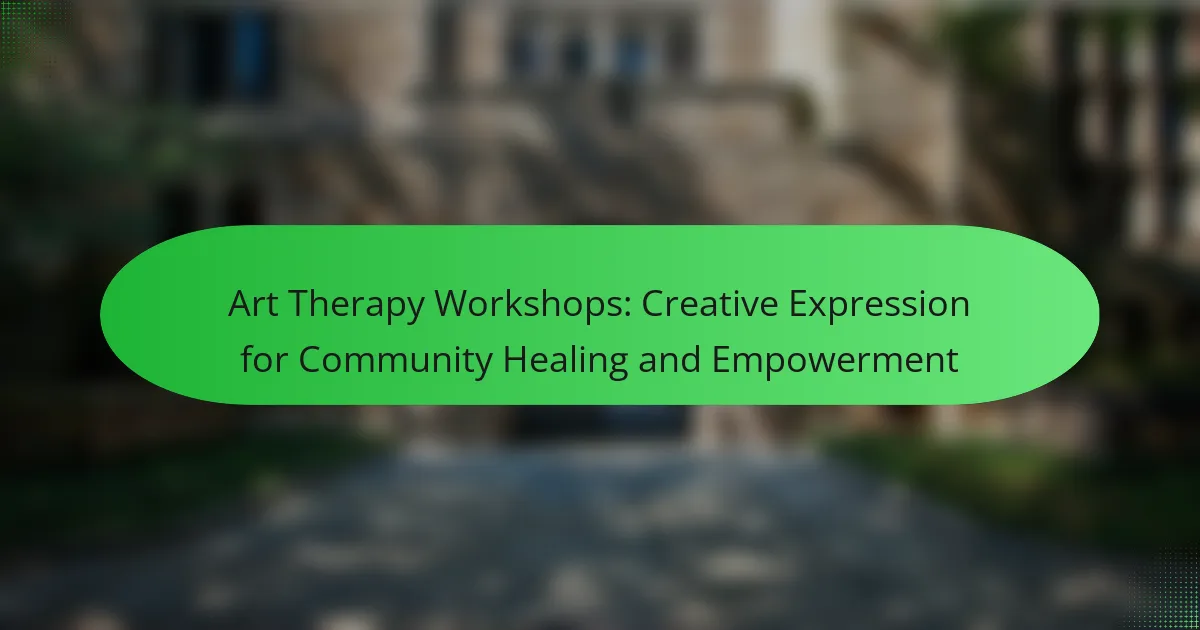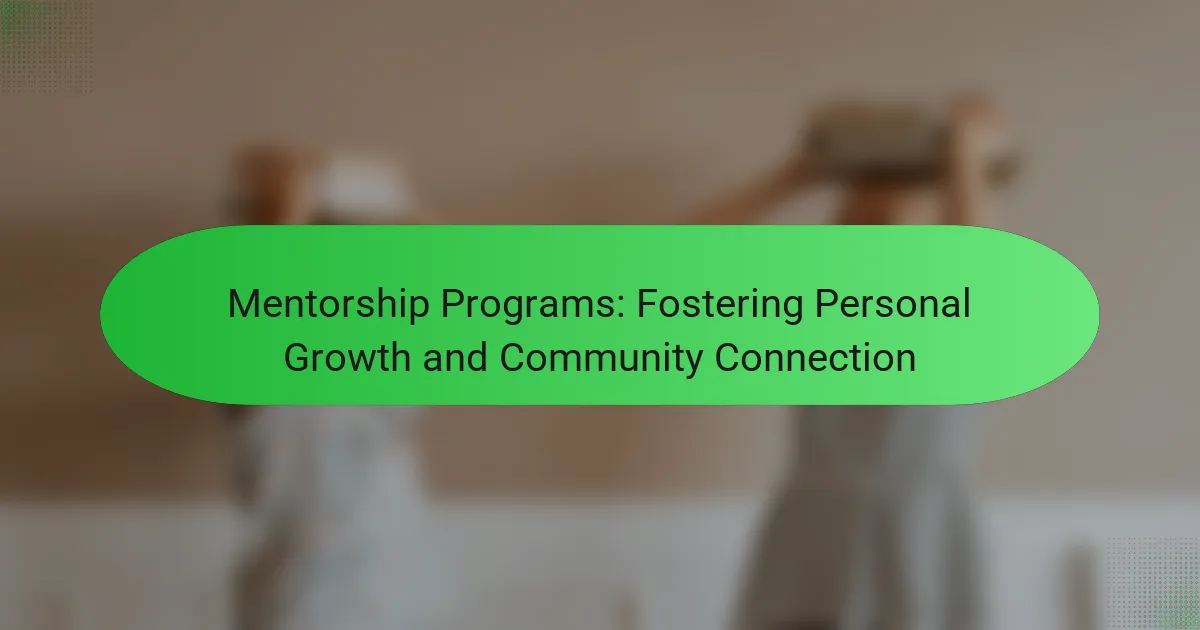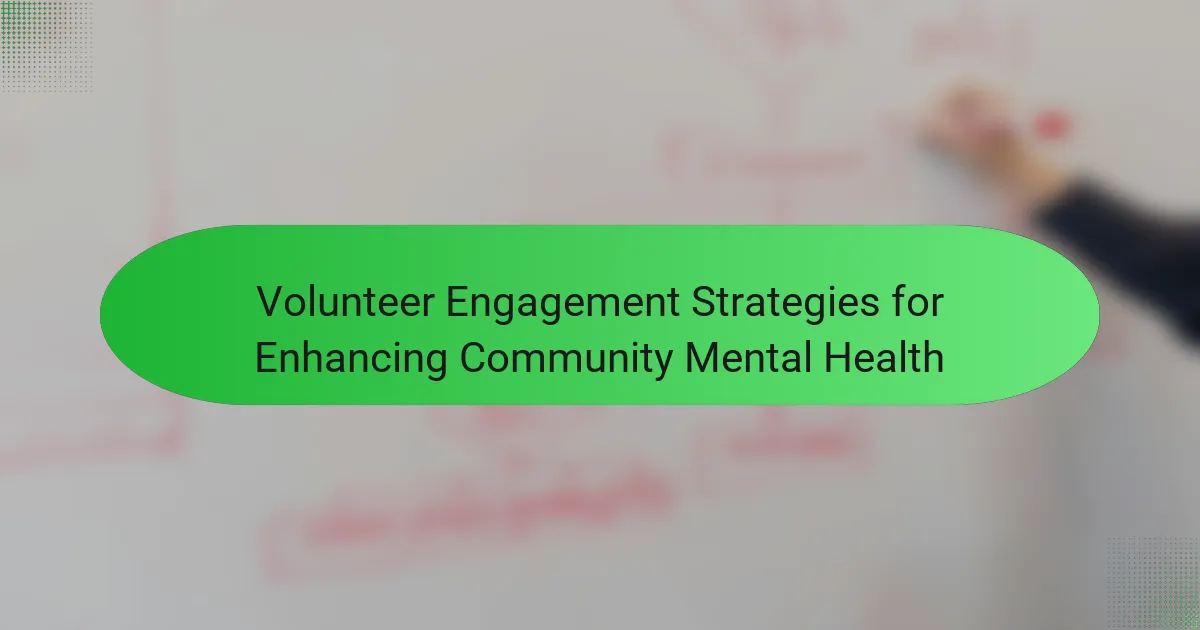Social media campaigns play a crucial role in promoting mental wellness and fostering community involvement. They facilitate open discussions, reduce stigma, and provide valuable resources. Engaging storytelling and interactive content maximize their impact. However, challenges like stigma and content creation complexity persist, requiring effective metrics to measure success and adapt strategies.
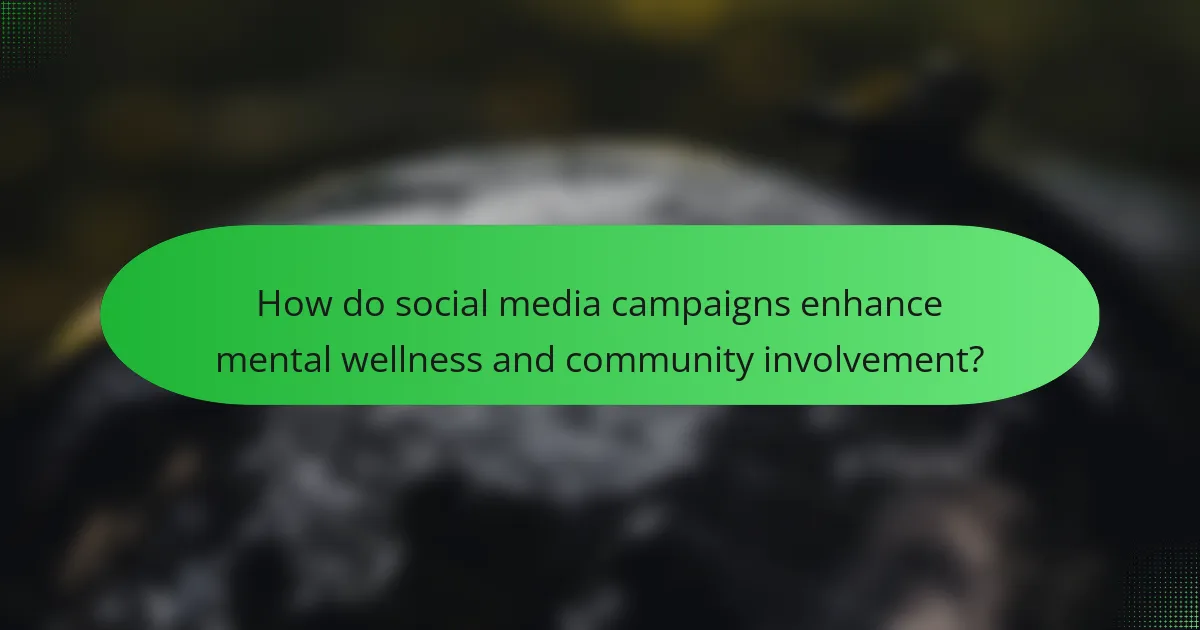
How do social media campaigns enhance mental wellness and community involvement?
Social media campaigns significantly enhance mental wellness and community involvement by fostering connections and providing support. These campaigns create platforms for sharing experiences, reducing stigma, and promoting resources. For instance, initiatives like #MentalHealthAwareness encourage open discussions, leading to increased community engagement. Studies show that 70% of participants in such campaigns report feeling more connected and supported. Additionally, these campaigns often leverage unique attributes, such as interactive content, to engage users effectively. By utilizing storytelling and personal narratives, they resonate deeply with audiences, driving participation and collective action.
What are the key psychological benefits of engaging in community-focused campaigns?
Engaging in community-focused campaigns offers significant psychological benefits, including enhanced social connections, increased feelings of belonging, and improved mental health. These campaigns foster a sense of purpose and empowerment among participants, leading to reduced feelings of isolation. Research shows that individuals involved in community initiatives report higher levels of life satisfaction and lower levels of stress. Additionally, collaborative efforts in campaigns can stimulate positive emotions and resilience, contributing to overall mental wellness.
Which social media platforms are most effective for promoting mental wellness?
Visual platforms like Instagram and TikTok are most effective for promoting mental wellness. They leverage engaging visuals to foster community involvement. Facebook also plays a significant role through support groups and event organization. Twitter facilitates real-time discussions and mental health awareness campaigns. LinkedIn can connect professionals to mental health resources and initiatives. Each platform offers unique attributes that enhance outreach and engagement, contributing to a holistic approach to mental wellness promotion.

What strategies maximize the impact of mental wellness campaigns on social media?
Engaging storytelling and community-driven content maximize the impact of mental wellness campaigns on social media. Authentic narratives resonate with audiences, fostering connection and empathy. Collaborating with mental health advocates enhances credibility and reach. Utilizing interactive elements, such as polls and Q&A sessions, encourages participation and dialogue. Consistent messaging aligned with community values strengthens trust and commitment. Regularly analyzing engagement metrics allows for timely adjustments to strategies, ensuring campaigns remain relevant and effective.
How can storytelling be used to foster community connection?
Storytelling can effectively foster community connection by creating shared experiences and emotional engagement. It encourages individuals to relate to one another through personal narratives, enhancing empathy and understanding. Social media campaigns that utilize storytelling can highlight local voices and promote mental wellness initiatives, thereby strengthening community bonds. For example, sharing personal stories of resilience can inspire others, leading to increased participation in community events and support networks. This approach not only raises awareness about mental health but also cultivates a sense of belonging among community members.
What role do influencers play in promoting mental wellness initiatives?
Influencers significantly enhance mental wellness initiatives through their extensive reach and relatability. They create engaging content that resonates with audiences, fostering community involvement and reducing stigma around mental health topics. By sharing personal stories and expert insights, influencers can motivate followers to participate in mental wellness campaigns. Their endorsement can lead to increased awareness and support for various mental health programs, ultimately contributing to a more informed and supportive community.
How can user-generated content enhance campaign authenticity?
User-generated content enhances campaign authenticity by fostering trust and engagement. It allows individuals to share personal experiences, creating relatable narratives that resonate with audiences. This genuine interaction encourages community involvement, as participants feel valued and heard. Research shows that campaigns featuring user-generated content can increase engagement rates by up to 50%. By showcasing real stories, brands can connect emotionally, reinforcing their commitment to mental wellness and community support.

What are the challenges faced in executing social media campaigns for mental wellness?
Executing social media campaigns for mental wellness faces several challenges. Key obstacles include stigma surrounding mental health, which can deter open discussions. Additionally, creating engaging content that resonates with diverse audiences is complex. Measuring the impact of campaigns poses another challenge, as mental wellness is subjective. Ensuring consistent messaging across platforms can also be difficult, leading to potential confusion. Finally, resource limitations often hinder the ability to maintain ongoing engagement with the community.
How do cultural perceptions of mental health influence campaign effectiveness?
Cultural perceptions of mental health significantly affect the effectiveness of social media campaigns promoting mental wellness. These perceptions shape how individuals engage with content and influence their willingness to participate in community initiatives. Campaigns that respect and reflect cultural values tend to resonate better with audiences. For instance, culturally sensitive messaging can foster trust and encourage open discussions about mental health. As a result, campaigns that align with community norms can increase participation rates and overall impact.
What are common pitfalls in messaging that can undermine campaign goals?
Common pitfalls in messaging for social media campaigns include lack of clarity, inconsistency, and failure to engage the audience. Clear messaging ensures that campaign goals align with the audience’s understanding. Inconsistent messaging can confuse participants and dilute the campaign’s impact. Engaging content is essential for fostering community involvement and promoting mental wellness effectively.
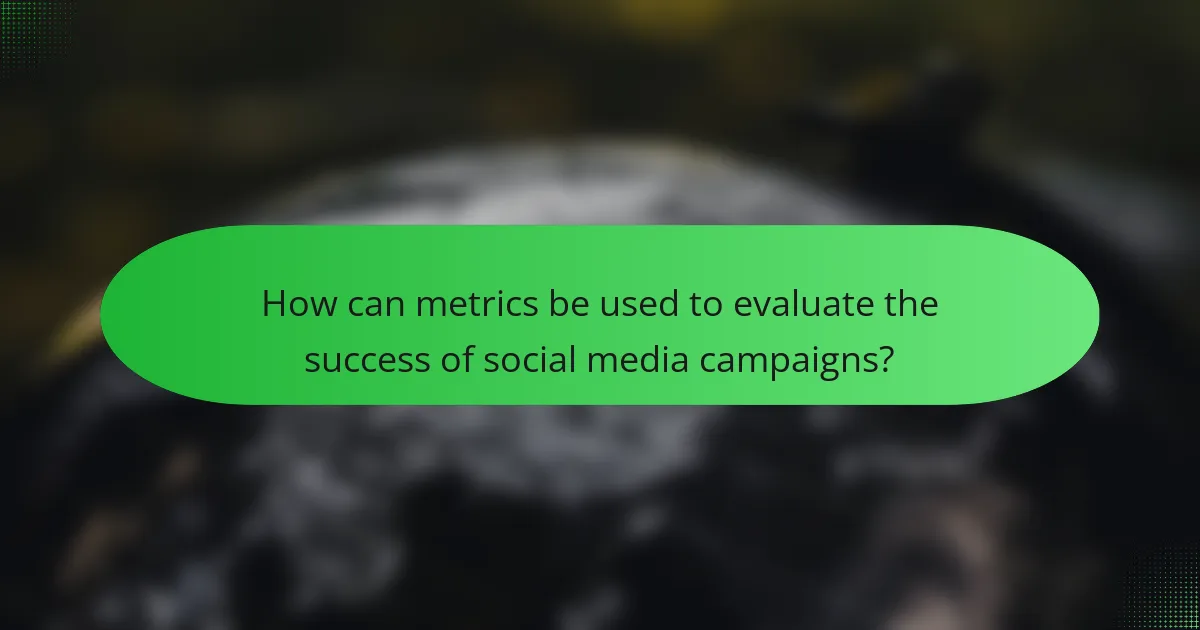
How can metrics be used to evaluate the success of social media campaigns?
Metrics can effectively evaluate social media campaign success by measuring engagement, reach, and conversion rates. Engagement metrics, such as likes, shares, and comments, indicate audience interaction and interest. Reach metrics reveal the number of unique users exposed to the content, providing insight into brand visibility. Conversion rates assess how many users take desired actions, such as signing up for a mental wellness program. Analyzing these metrics helps refine strategies and enhance community involvement initiatives.
What key performance indicators should be tracked for mental wellness campaigns?
Track engagement rates, reach, impressions, conversion rates, audience demographics, and sentiment analysis for mental wellness campaigns. These key performance indicators provide insights into campaign effectiveness and community involvement. Engagement rates measure interactions, while reach and impressions assess visibility. Conversion rates indicate successful actions taken by users. Audience demographics help tailor content, and sentiment analysis gauges public perception. Monitoring these metrics ensures campaigns resonate with target audiences and promote mental wellness effectively.
How can audience feedback be integrated into campaign optimization?
Integrating audience feedback into campaign optimization enhances engagement and effectiveness. Collect feedback through surveys, polls, and social media interactions. Analyze the data to identify trends and preferences, adjusting content and strategies accordingly. Implement changes iteratively to reflect audience needs, fostering a sense of community involvement. This approach builds trust and encourages ongoing participation in mental wellness initiatives.
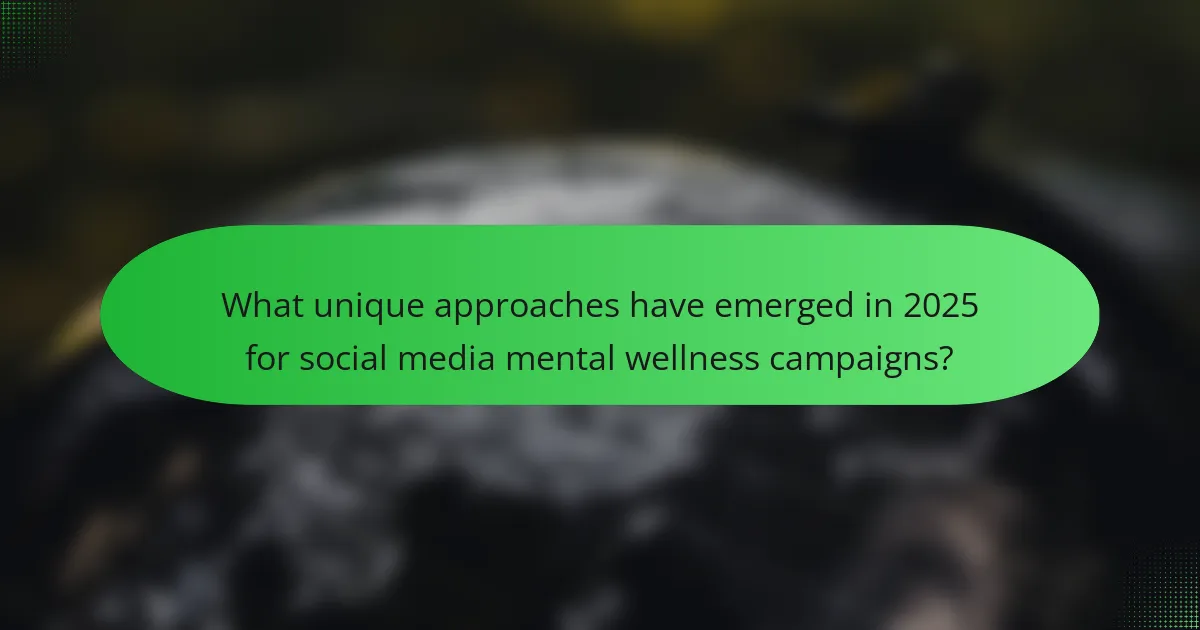
What unique approaches have emerged in 2025 for social media mental wellness campaigns?
In 2025, social media mental wellness campaigns increasingly utilize interactive elements and community-driven initiatives. These approaches enhance engagement and foster a sense of belonging among users. Campaigns now often feature real-time support groups and peer-led discussions, promoting shared experiences and reducing stigma. Additionally, data analytics are employed to tailor content to specific audience needs, improving effectiveness. These unique strategies reflect a shift toward personalized mental health support in the digital space.
How are emerging technologies shaping community engagement in mental health?
Emerging technologies significantly enhance community engagement in mental health through social media campaigns. These campaigns promote mental wellness by connecting individuals, sharing resources, and reducing stigma.
Social media platforms facilitate real-time interaction, allowing communities to participate in discussions and support each other. For instance, campaigns using hashtags can unify voices around mental health issues, driving awareness and encouraging involvement.
Data shows that 70% of users engage with mental health content on social media, indicating a strong interest in community-driven support. Furthermore, innovative tools like virtual reality and apps provide immersive experiences for mental wellness, making resources more accessible.
As a result, these technologies foster a sense of belonging, encouraging individuals to seek help and participate actively in community initiatives.
What innovative formats are being utilized for campaign outreach?
Innovative formats for social media campaigns promoting mental wellness include interactive polls, live Q&A sessions, and user-generated content challenges. These formats engage audiences and foster community involvement. For example, live sessions can facilitate real-time discussions, while polls gather insights on mental health topics. User-generated content encourages participants to share their experiences, creating a supportive environment.
Which case studies exemplify successful mental wellness campaigns on social media?
Successful mental wellness campaigns on social media include the #BellLetsTalk initiative, which raised over $7 million for mental health programs, and the #MentalHealthAwareness campaign by the World Health Organization, which reached millions globally. These campaigns effectively utilized personal stories and expert advice to foster community involvement and reduce stigma. Another example is the #ItsOkayToTalk campaign, which encouraged open discussions about mental health, significantly increasing engagement and support. These case studies illustrate the power of social media in promoting mental wellness through community-driven narratives.
What best practices should be followed to ensure campaign sustainability?
To ensure campaign sustainability, engage your audience consistently, measure impact, and adapt strategies. Build a strong community by fostering collaboration, sharing success stories, and encouraging feedback. Utilize data analytics to refine content and maintain relevance in promoting mental wellness. Establish partnerships with local organizations to enhance reach and credibility.
